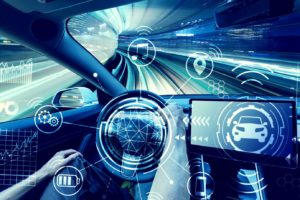Anyone who has seen the Pixar film, WALL-E, might have a less than favourable impression of a future influenced by autonomous machines. In WALL-E’s world, the human race progressed technology to such an extent that people hardly needed to lift a finger and so became lazy and overweight, while the Earth became unlivable due to the accumulated rubbish.
A cautionary tale, and autonomous technology has been a common theme for science fiction over the years. However, we are already on the journey towards autonomous vehicles, among other machines, and people are now almost at the point of taking its nascent benefits for granted. So, what does the future have in store? Are we on the cusp of being free to have 6-month vacations in space while the robots do their thing? Depending on your viewpoint, unfortunately not.
Data and autonomy go hand-in-hand
One aspect that’s important to understand about our autonomous future is that it’s not just about robotics, but also data. A lot of data. Oceans of harmonised, free-flowing information will drive the factories and businesses of the future. And that data is already being produced by the millions of digital devices found in every modern factory, but at present it’s not being utilised to its fullest potential.
Many manufacturing operations are currently able to use insights from their data to spot issues happening along the production line and correct them automatically, which will help their overall efficiency enormously. Our journey is set to take us further along the road, from automation towards autonomy, a position where an even greater pool of data empowers much deeper and smarter decision-making. It will enable identifying the conditions that led to previous production errors, predicting unwanted outcomes and stopping them well before they are able to happen again. True autonomy has the potential to bring about the biggest leap forward in efficiency, productivity and quality since the Industrial Revolution.

While autonomous vehicles and self-navigating drones are perhaps the most visible examples of this technology, there are enormous benefits for broader industries as we glimpse the dawn of the Autonomous Things (AuT) age. This combines the data capture capabilities of sensors, cross-functional connectivity and incredible analytical computing power to enable machines to make independent data-based decisions and complete tasks without the need for human intervention.
But much like the original Industrial Revolution, these advances won’t lead to swathes of society being able to down tools and take extended holidays (in space or otherwise). Instead, our future workplaces will require employers to make adjustments and some employees will need to acquire new skills, adapting to an exciting new environment. While autonomous systems and processes will provide a framework for more efficient and productive future operations, a significant human element will always be in place to oversee a hybrid setup.
Your partner for an autonomous future
Hexagon puts data to work, linking software and hardware to enable accelerated progression towards our autonomous future. We understand the inherent issues and challenges related to manufacturing, and our expertise from sensor technology to production and design software development puts us at the forefront of the journey to autonomy. This expertise will also be showcased at the Future of Manufacturing Summit at HxGN LIVE Global 2022.
Explore, discover and learn about smart digital reality solutions at this essential summit, just one of the content streams at HxGN LIVE Global. Hear from experts on how proven technology is digitally transforming facilities and assets to drive productivity, optimise workflows and digitalise your manufacturing ecosystem. Network with industry leaders, take home ideas that will inspire your organisation, and experience an autonomous future: https://hxgn.biz/31LRJtG














